Best Mountain Bikes for Women (& do you really need one?)
Shopping around for a new bike? Learn more about the top women’s mountain bikes and tips on how to decide if you need a women’s-specific rig
Hey lady! Is it time for a new bike? Or maybe you’re ready to upgrade your old set of wheels. Whatever your reason for shopping around for the best mountain bikes for women, I’ve got you covered.
Women have been riding bikes and shredding singletrack for years, but only recently have companies started making women’s specific mountain bikes.
The question, though, is do you really need one? And if so, what are the best options available?
In this post, I break down what a women’s mountain bike really is, tips for deciding whether you need a female-specific bike, and the best women’s mountain bikes available for 2022.
What is a women’s mountain bike & How do they differ from men’s?
“A women’s bike is any bike a woman rides”
Trek Website
To be honest, there’s not a whole lot that sets a women’s mountain bike apart from all the ‘unisex’ bikes on the market.
Sure, some brands (like Liv) do have slightly different frame geometry which I’ll talk about below and others (like Juliana) set their women’s bikes up with lighter suspension tunes.
Let’s take a look at the main differences between women’s and unisex bikes:
Bike frame size
Many women’s mountain bikes come in smaller sizes than men’s or unisex bikes. Women, on average, are shorter than men and sometimes an extra-small bike is needed for those ladies close to or under 5 feet tall.
On the flip side, some women’s bike brands, like Juliana, do not offer bikes in L or XL.
Also, on some women’s bikes, the top tube is curved to make it more accessible for shorter women to straddle the bike. Check different brands and models to see what options they have in your size.
A women’s-specific bike may or may not be needed for your height.
Geometry
Perhaps the most disputed difference between women’s mountain bikes and unisex bikes is the geometry. Liv, the sister company of Giant that – like Juliana – produces only women’s mountain bikes argues that the difference in women’s torso and arm length in relation to their height warrants a different frame geometry.
In other words, Liv says that women, on average, have shorter torsos and longer legs than men and therefore require a different bike set-up.
Theoretically.
Usually, this means a shorter top tube (shorter reach) and a higher rise (longer stack). Of course, women can swap out components like the stem to get a shorter reach, but that means relying on guesswork rather than actual science and data.
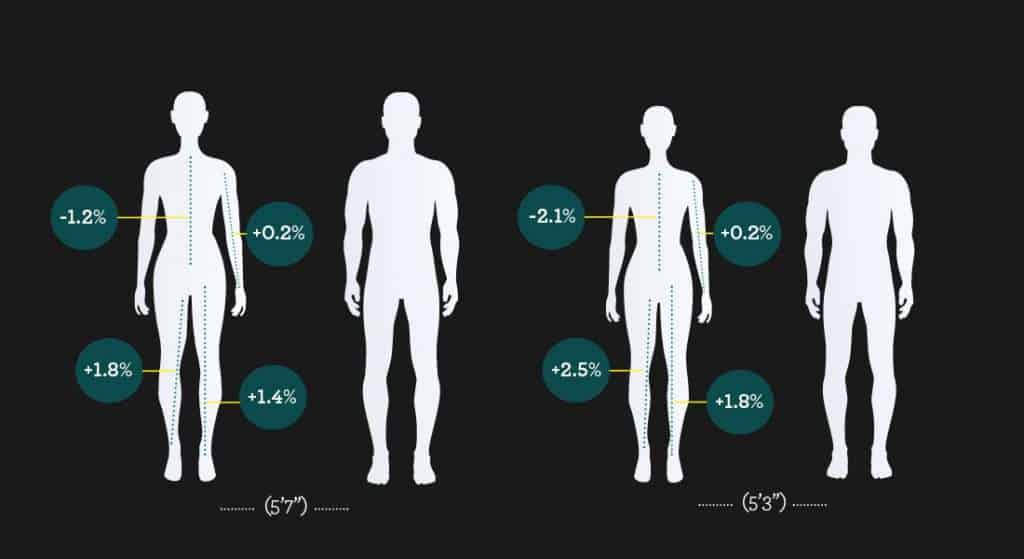
I don’t necessarily buy into this argument. There are men out there with short torsos and long legs and women with vice versa. Just like people, all bikes are different and it really comes down to what feels most comfortable to you and your body.
If you demo a Liv bike and it feels right, great! But you might also jump on a Devinci (who doesn’t have a women’s line) and it may feel just as good.
Unless you’re the elite of the elite athletes and looking to get the absolute most out of the geometry of your bike (or you have exceptionally long legs or an exceptionally short torso), it’s better to focus on feel and comfort of all bikes rather than limiting yourself to a women’s line.
As a final note, geometry differs for each bike brand. For example, Juliana bikes have EXACTLY THE SAME geometry as their counterpart Santa Cruz bikes (ex: the Roubion and Bronson below) whereas the geometry of comparable Giant bikes does differ from their sister company, Liv.
Juliana Roubion Santa Cruz Bronson
These bikes are pretty much identical
Suspension Set Up
Women tend to weigh less than men (30lbs, on average according to Juliana), so therefore women need a bike with suspension that is appropriate for their weight, right? Yes, however pretty much all suspension set-ups (both front fork and rear shock) can be adjusted for a wide variety of weights by dialing in the air spring (how much air is in the shock) and adjusting the rebound (how fast the shocks rebound).
There are no women-specific shocks (that I am aware of).
That being said, Juliana (sister brand to Santa Cruz) does sell their bikes with a slightly ‘lighter’ shock tune than Santa Cruz bikes to help the bike feel more plush and smooth for lighter (and less aggressive) riders.
Saddles
Women’s saddles do make a difference, but these are easily swapped out. Women tend to have wider sit bones than men and therefore a wider saddle is more comfortable.
Women’s mountain bikes will most likely come with a women’s-specific saddle, but that’s not – in my opinion – a reason to only opt for a women’s bike.
Need a new saddle? Learn everything you need to know about how to choose a bike saddle so you get the perfect fit.
Color
I hate to say it, but a lot of women-specific mountain bikes come in ‘female colors’ like pink, sky blue, or purple. To be fair, there are usually a few colors to choose from including less womanly hues, but it annoys me that female = pink.
I have noticed in recent years that this is changing, though! Juliana has been coming out with some amazing color choices.
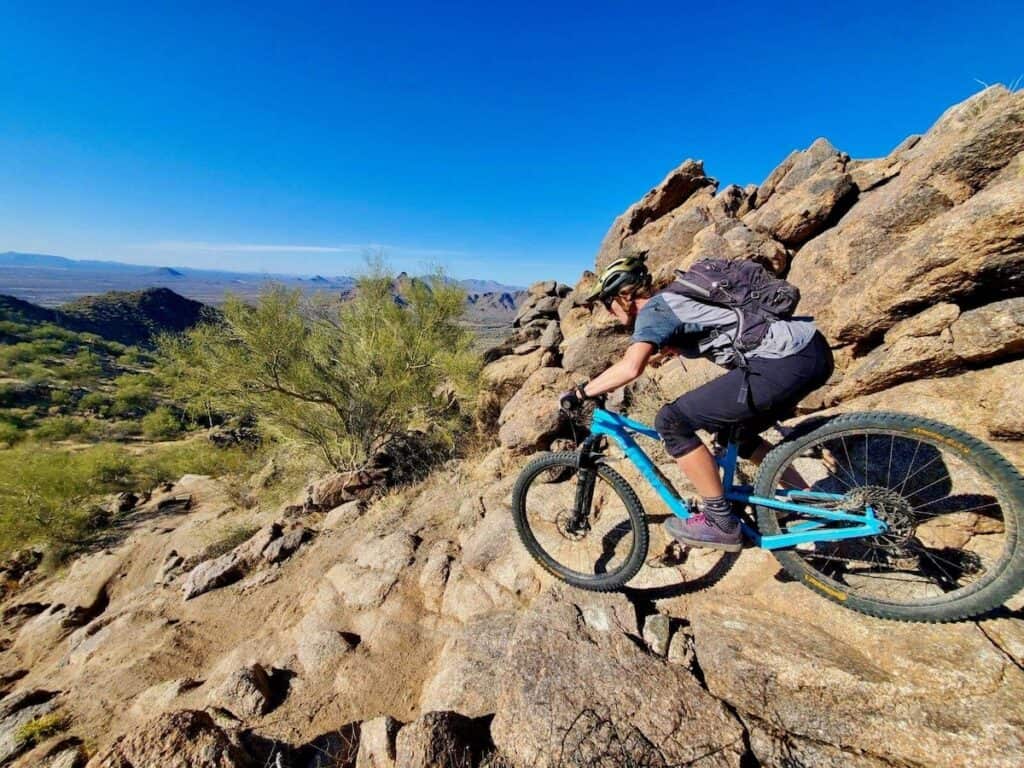
So do you need a women’s mountain bike?
Any mountain bike you buy these days is going to be an amazing bike, women-specific or not.
Many women’s mountain bikes do have a few women-specific features (like the ones I talked about above), but I just want you to understand that women don’t need to ride a women’s bike.
There are so many great mountain bike options out there, so try not to put yourself in a box. Keep your options open and try to really dial in what is most important to you when it comes to a new bike.
That being said, women’s mountain bikes can be optimal for certain cases.
Choose a women’s mountain bike if:
- You’re on the shorter side and need an extra-small bike
- If you have a particularly shorter torso and longer legs
- You like being part of a women’s mountain biking movement
- You love the color!
As a final note, I really like this article by racer and Juliana ambassador Alex Pavon about why she believes women’s mountain bikes are making a big difference in the sport. It has nothing to do with the bike, but rather the fact that women’s bike brands elevate female athletes and give a brighter spotlight on women riders.
5 best mountain bikes For women
Alright, let’s jump into the best mountain bikes for women. There are two women-specific brands at the forefront: Juliana and Liv. Juliana is the sister company of Santa Cruz and Liv is the sister company of Giant.
Personally, I LOVE Santa Cruz and therefore I love Juliana because they are essentially the same bikes. I haven’t ridden any Liv bikes, but they get rave reviews and there’s a strong Liv community of women riders that you can find all over the country. I also coach with Ladies AllRide, which has a strong partnership with Liv.
If you’re new to picking out a mountain bike, be sure to read my post on how to choose a full-suspension mountain bike.
1. Juliana Furtado
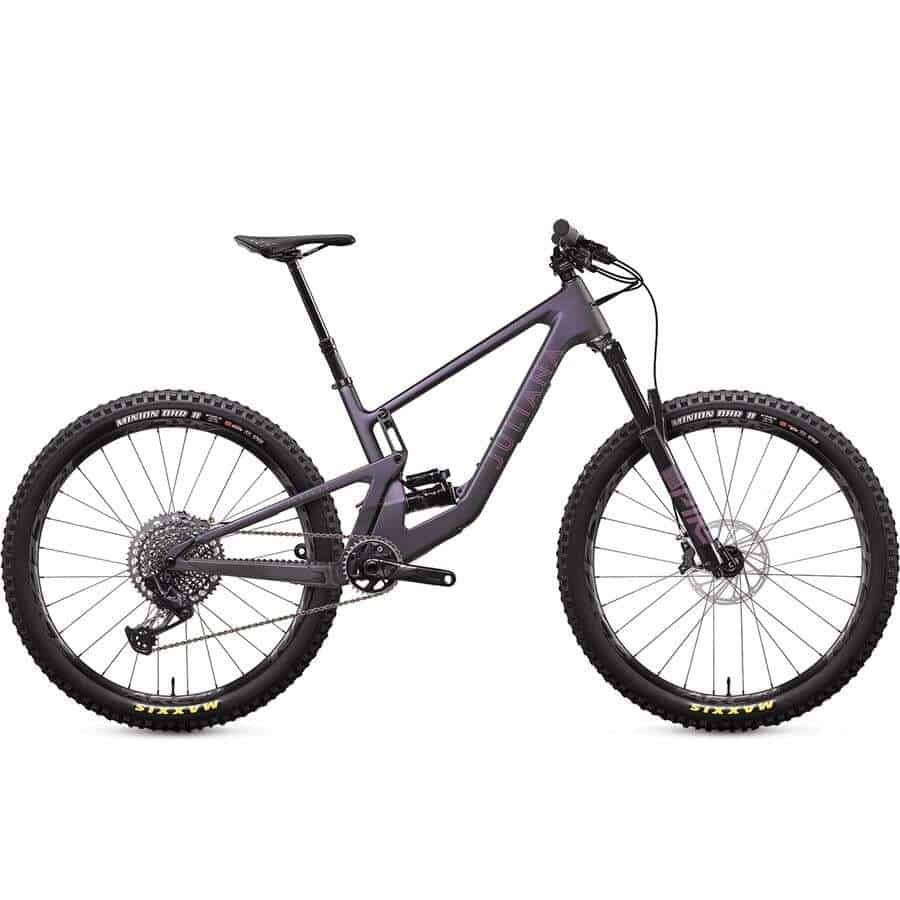
Specs
- Great for: Riders who want to do it all, mullet (mixed wheel) fans, newer mountain bikers
- Wheel size: Mixed (27.5″ rear, 29″ front)
- Suspension: 130 mm rear, 140 mm front
The Juliana Furtado is the equivalent of the Santa Cruz 5010. It is a short/mid-travel bike with 130mm of suspension in the rear shock and 140mm of travel in the front fork.
The Furtado is a great ‘do it all’ bike for women who want to do a little bit of everything. From cross-country to enduro to bike park, it’s the only bike you need in your quiver. That being said, since it’s so versatile, it doesn’t excel at one thing.
The Juliana Furtado has been updated to rock mixed wheels – 27.5″ in the rear and 29″ in the front – which is my personal preference for enduro and downhill riding. Mixed wheels do detract a bit from speed and efficiency on cross-country terrain, though.
If you want more of a true cross-country bike, check out the Juliana Wilder which is a short-travel cross-country bike with 29″ wheels.
2. Juliana Roubion
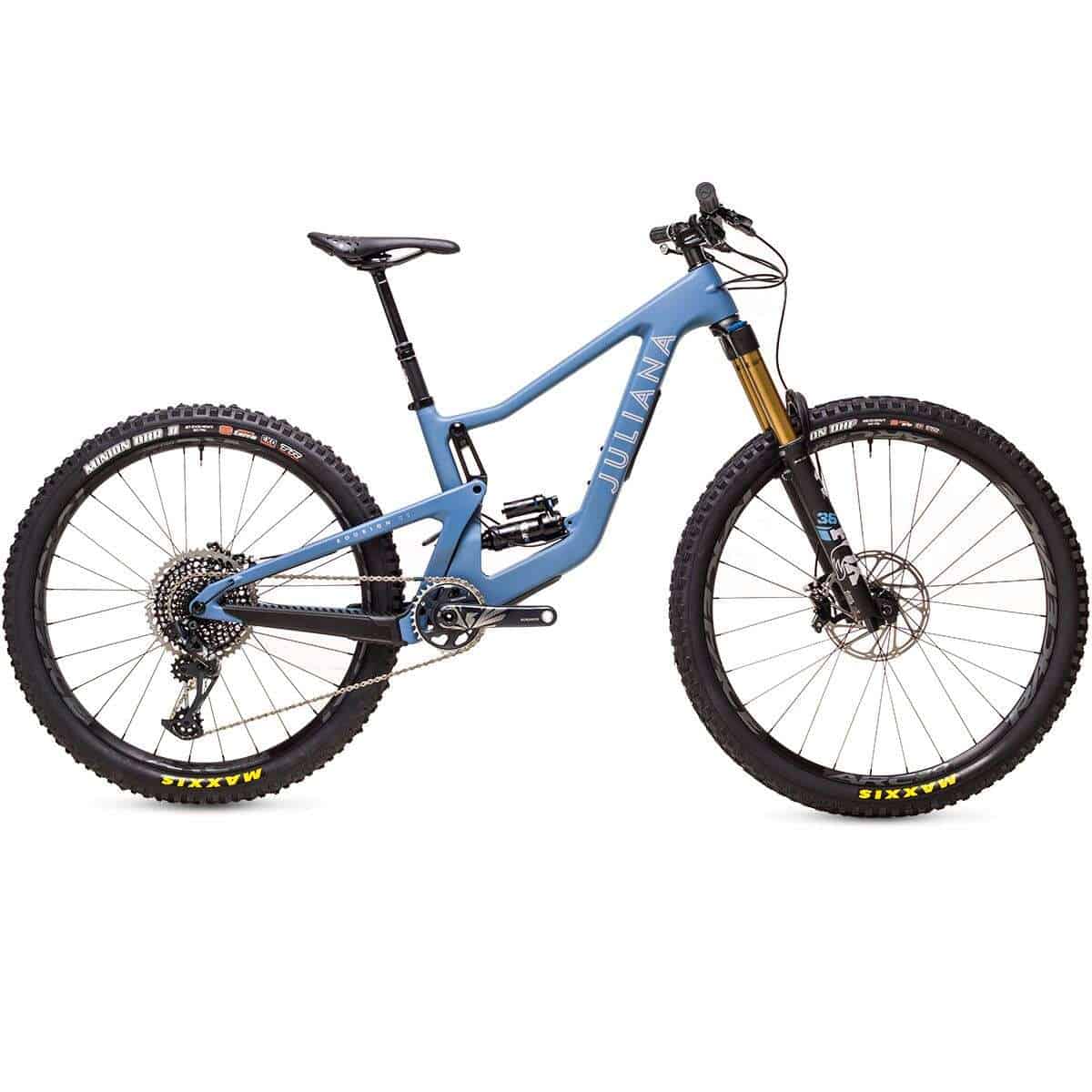
Specs
- Great for: The gravity-oriented shredder who enjoys downhill more than uphill (but will still pedal for the good stuff).
- Wheel size: Mixed (27.5″ rear, 29″ front)
- Suspension: 150 mm rear, 160 mm front
The Juliana Roubion is a step up in suspension travel from the Furtado. It is equivalent to the Santa Cruz Bronson (which is what I currently ride!) with 150mm of travel in the rear and 160mm of travel in the front.
The Roubion is a mixed-wheel bike, so it has a 27.5” wheel in the rear and a 29″ wheel in the front. Personally, I love this setup because I find that it offers the best of both worlds: quick and nimble in the rear and lots of smashing power in the front.
The Roubion would be a great choice for someone who wants to ride more downhill and technical terrain from the bike park to enduro-style trails. It’s not the best for long cross-country rides
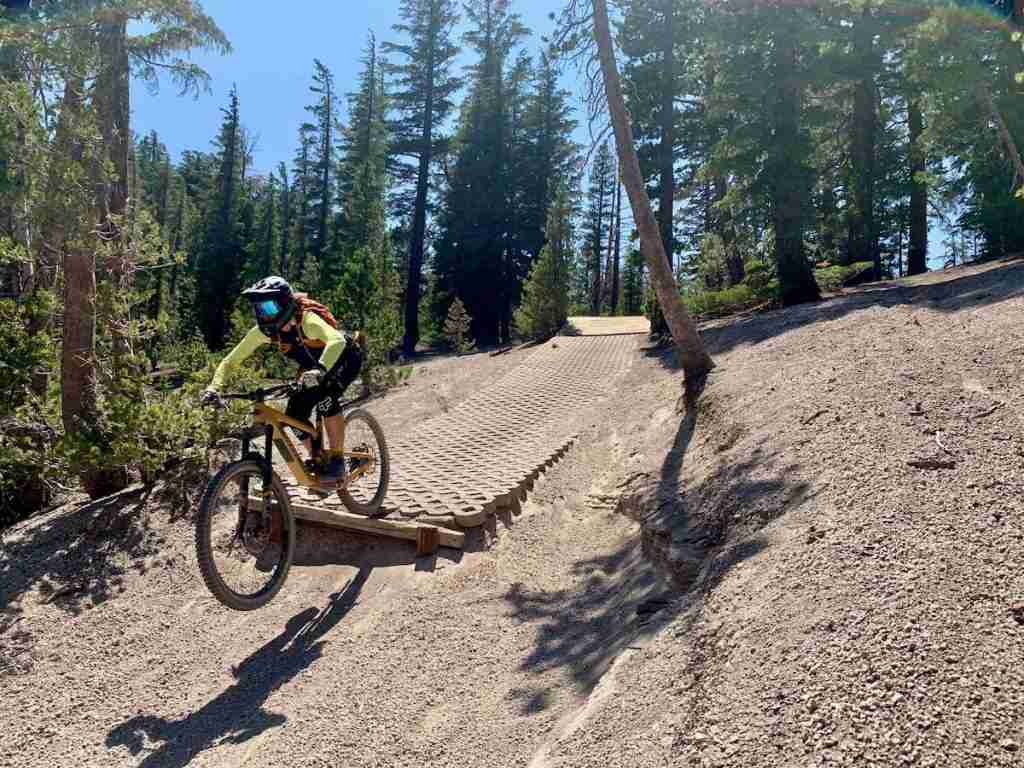
3. Juliana Joplin

Specs
- Great for: Cross-country enthusiasts who enjoy long, pedally rides
- Wheel size: 29″
- Suspension: 120 mm rear, 130 mm front
The Juliana Joplin is my cross-country mountain bike. It’s similar to the Furtado in that it’s a short-travel bike, but it has 29″ wheels instead of a mixed wheel setup.
The Joplin’s ‘brother’ is the Santa Cruz Tall Boy, which is touted as the downhiller’s XC bike (that’s me!).
I really love my Joplin – it’s great for east coast riding with lots of rocks and roots and it’s also great for long, pedaly desert cross-country missions. If I’m doing a ride with more downhill-focused trails, I’ll bring my Bronson (the Juliana Roubion).
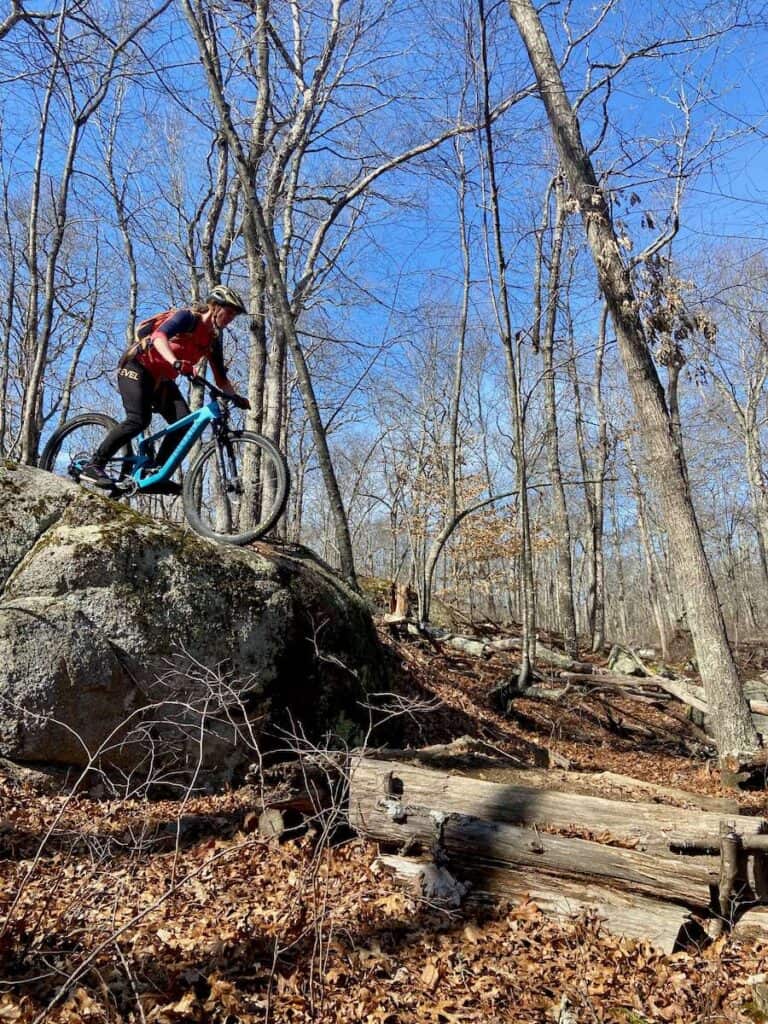
4. Liv Intrigue
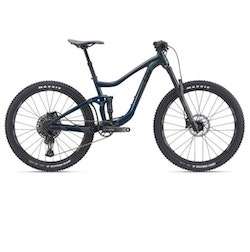
Specs
- Great for: All-around riders who want to pedal and hit the downhill trail
- Wheel size: 29″ or 27.5″
- Suspension:
- Suspension: 140 mm rear, 150 mm front
The Liv Intrigue is a mid-travel do-it-all bike. With 140mm of rear suspension and 150mm of front fork travel and the option to choose 27.5″ or 29″ wheels, it’s a great bike that can tackle both trail riding and moderately technical descents.
If you’re just starting out and don’t plan on doing anything too rowdy, this would be a great option.
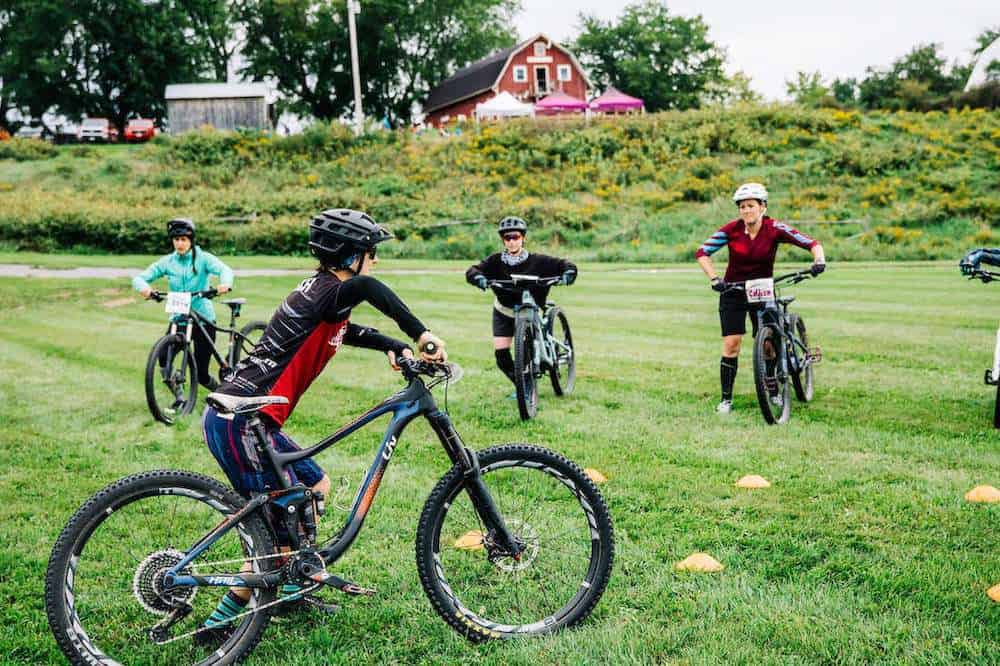
5. Liv Pique
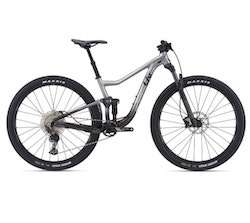
Specs
- Great for: Cross-country pedalers and newer riders who know they don’t want to get too rowdy
- Wheel size: 29″ or 27.5″
- Suspension:
- Suspension: 100 mm rear, 100 mm front
The Liv Pique is the shortest-travel bike on this list with only 100 mm of travel in the front and the rear.
It’s a great option for cross-country enthusiasts and riders who know they don’t ever want to get too rowdy on the descents.
Last thoughts on women’s mountain bikes
So are women’s mountain bikes all just marketing? Yes and no. Some women may really benefit from a women’s-specific mountain bike if they have the proverbial short torso and long legs and are relatively short in stature.
BUT this doesn’t mean that unisex bikes can’t work for them. What it really comes down to is how a bike feels, what your budget is, what your riding style is, how much you ride, and what kind of components you want.
If you’re set on getting a women’s mountain bike – go for it. They’re awesome. But know that unisex bikes are a great option for women too.
Read next
Looking for more ladies-specific mountain bike tips and recommendations? Check out these related blog posts:
What are your thoughts on women’s mountain bikes? Do you ride a Juliana or Liv? Why? Did you not opt for a women’s mountain bike? How come? Leave a comment below!

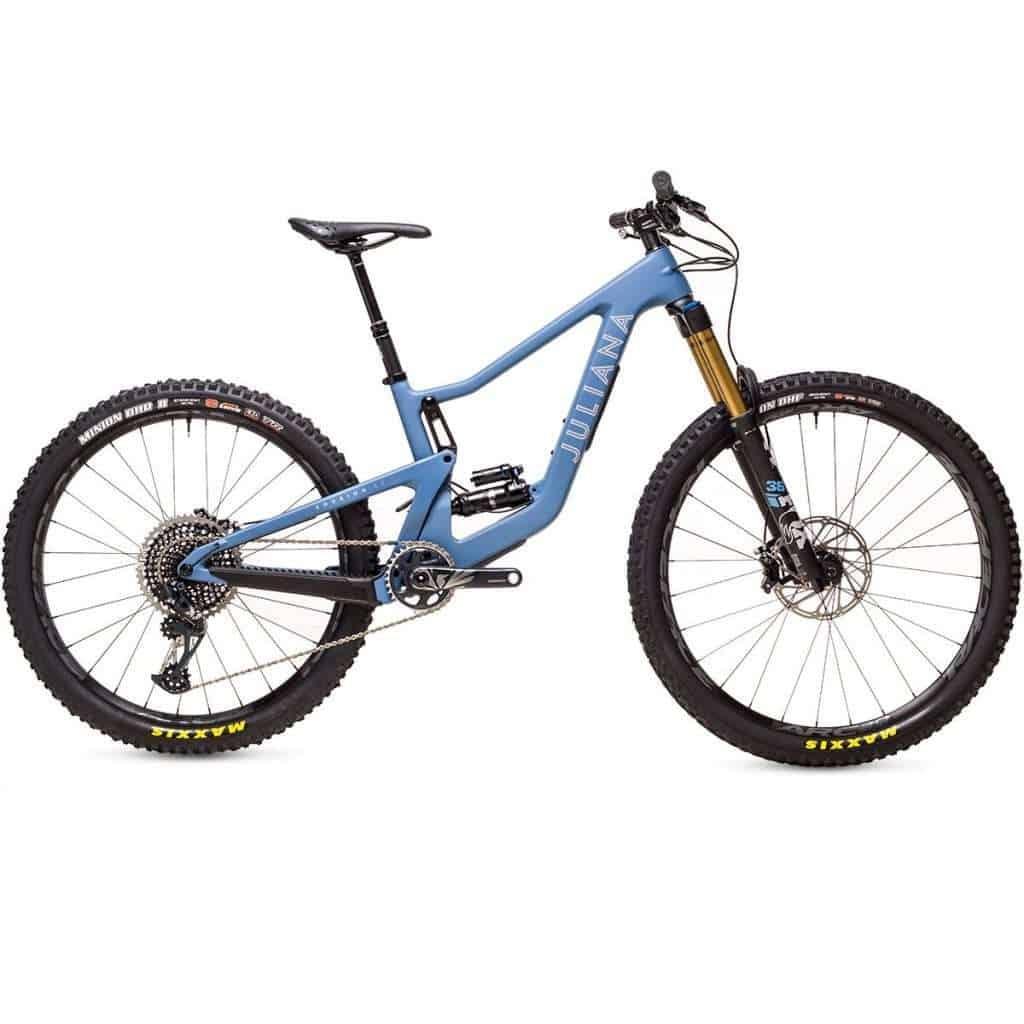
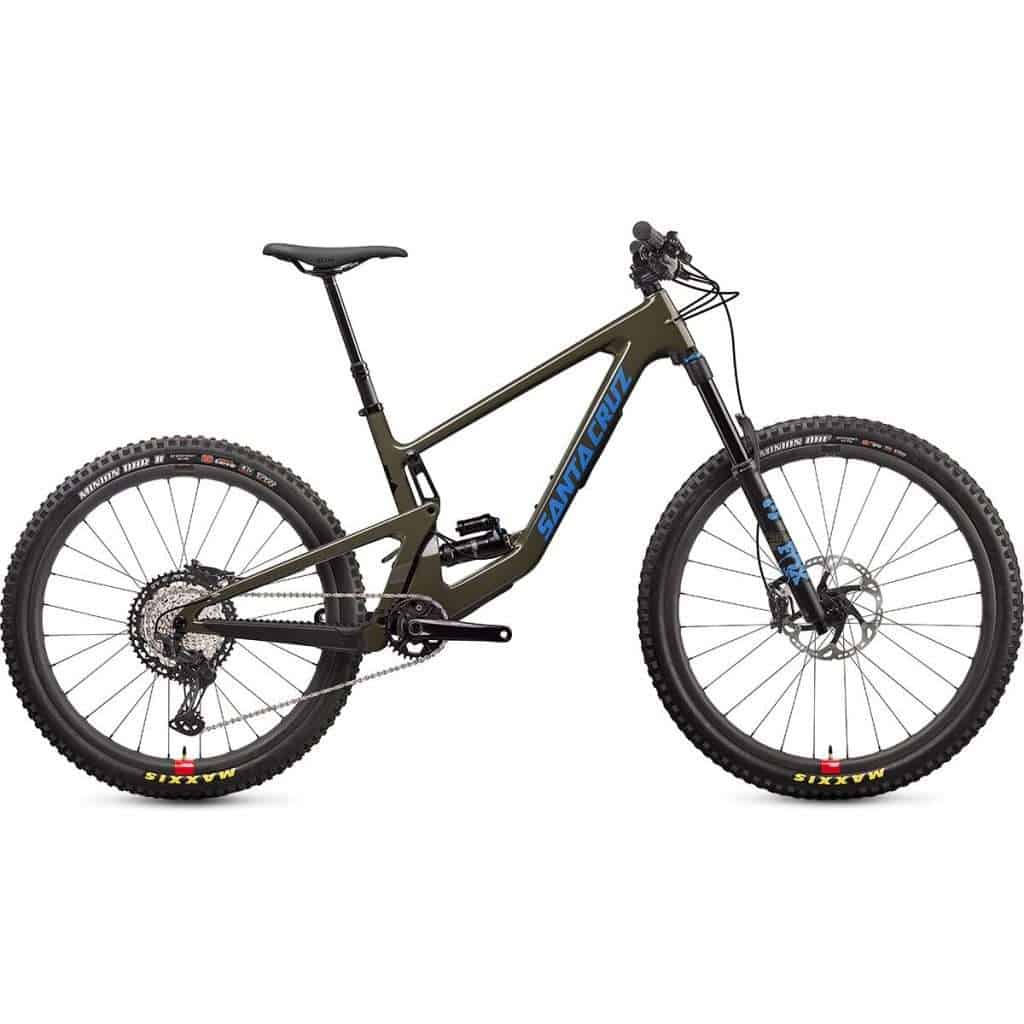

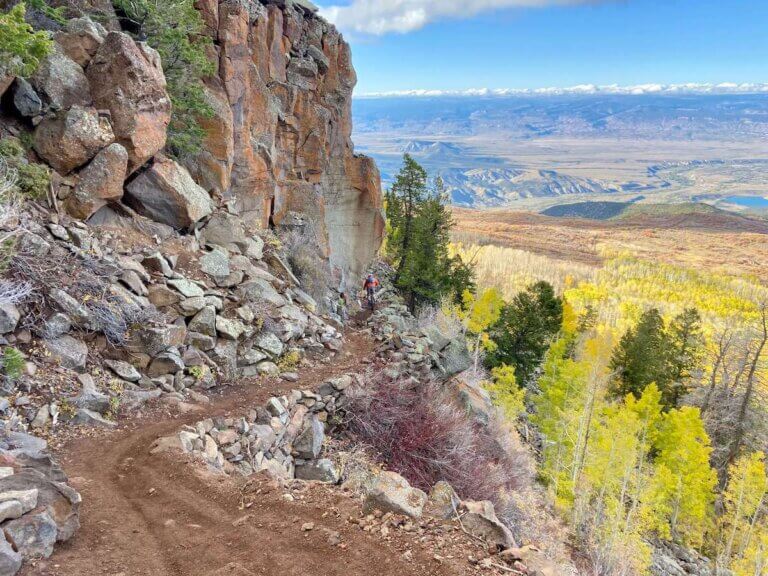
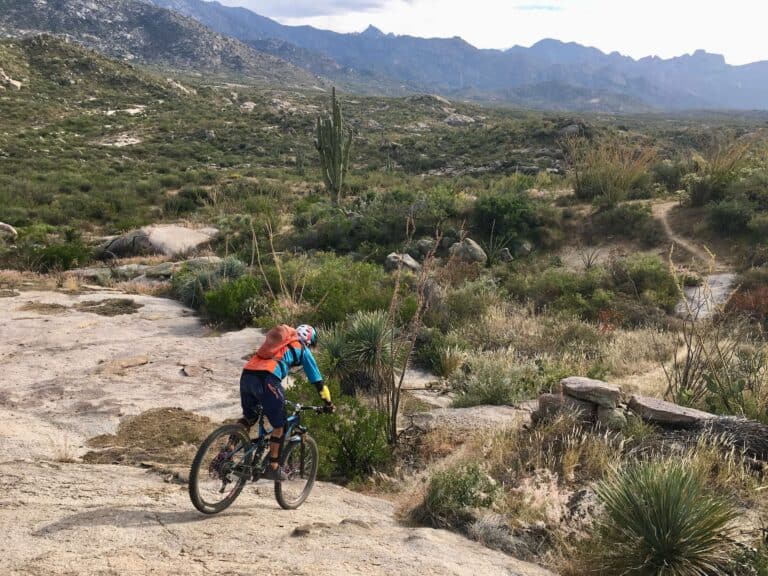
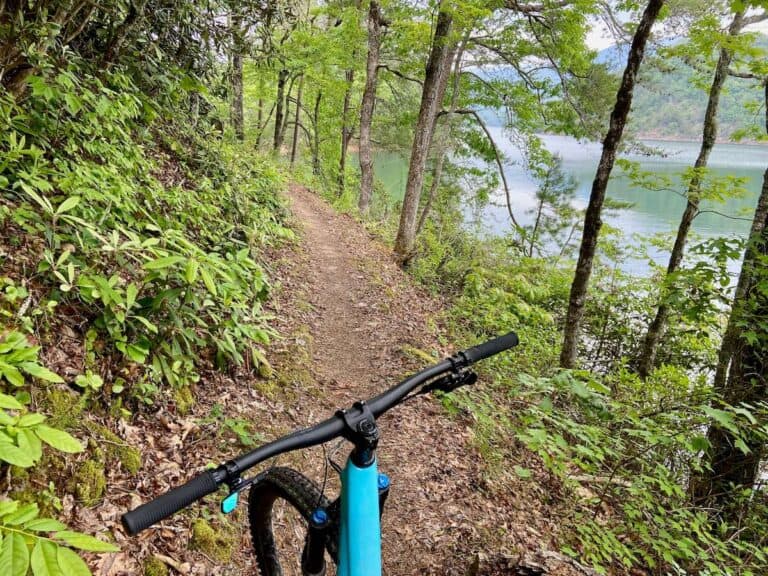
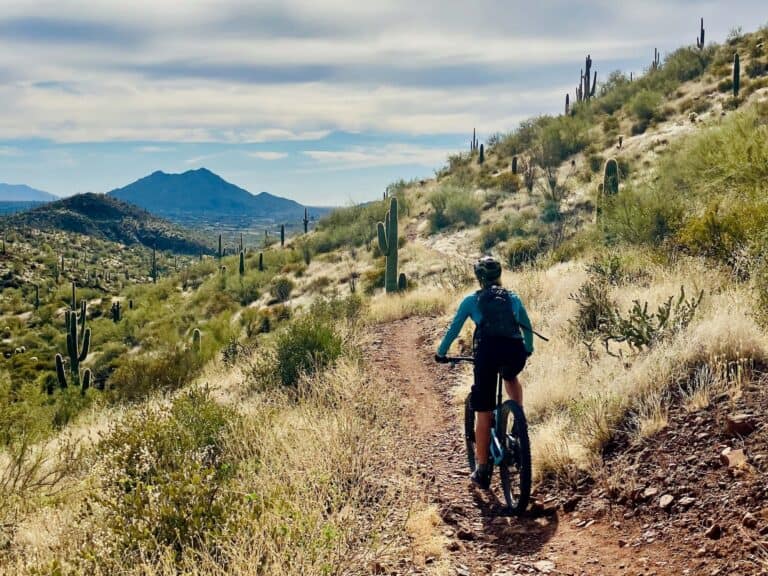
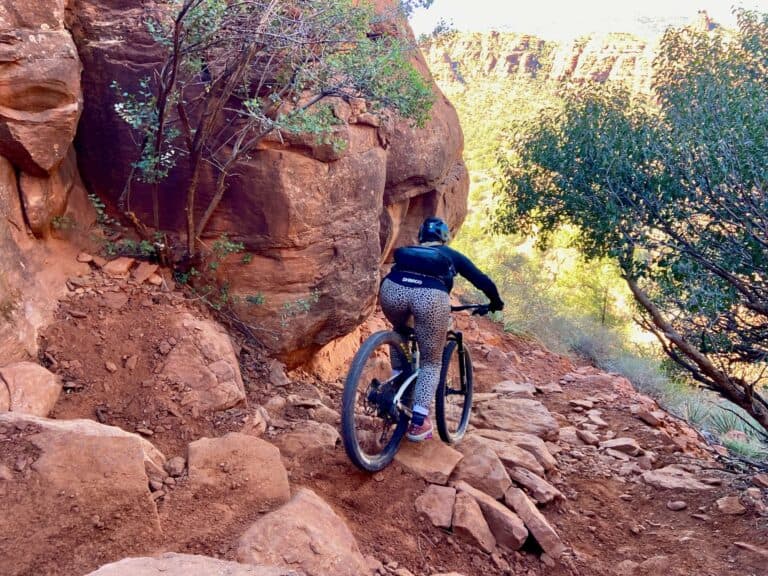
Super informative…thank you! I wrote some notes as I was reading to help with my future bike purchase. Thanks again!
Kristina 🙂
So glad you found it helpful 🙂
I’m only considering riding. I’m not sure I even like it, so I was trying to go cheap. I didn’t want to invest so heavily in something that I may not like. This article was very informative. It gave me things to consider when purchasing. I would say it boils down to what feels right. Thanks for sharing.
So glad you found it helpful. Good luck in your bike search!
Hi,
We all differ. Perhaps in the future we will be able to design and print a bike to suit non-average riders. I’m looking at Livs because I have legs 87cm long against 176.5cm height, and I simply can’t ride mens bikes, or ‘ladies’ specific’ which are built on men’s frames. It is unsafe and painful. My male o/h is 190cm tall and has legs the same length as mine. I would love a MTB that fits. I own a bike and ride standing up because I am desperate to get out there, but sitting for any length of time is not possible. I rode for 30mins today and my shoulders are killing me. Happy biking!!
Great post! I’m a petite gal at 5’3″ and 110lbs.. And also have a pretty short torso and long legs. After lots of research, I settled on a Santa Cruz 5010 in size small frame. I wasn’t able to demo much as our few LBS don’t stock small frames. But I got lucky with the 5010-I absolutely love it-it’s playful but aggressive when you need it to be, handles bike park days to long, chunky uphill climbs and the ensuing descents with finesse. I’m an upper level intermediate doing mostly xc and park with some downhill. I find my bike comfortable and capable wherever I take it. I think for the price you are getting a very versatile bike with the 5010.
Also, to anyone reading this – with air forks and shocks you can buy a relatively cheap pump and set the suspension up yourself. It is incredibly easy and I’m surprised I don’t see it mentioned more often… You don’t need the manufacturer or a bike shop. All forks and shocks have their specs available based on weight on what PSI they should be set at based on the rider’s weight.
I debated buying a Liv or Juliana, but just didn’t buy that I really needed a bike specifically made for women. Plus if I ever need to sell my bike, I will have a larger market instead of being pigeonholed with a women’s specific bike.
In the end it is really all personal preference and what fits your style and needs. Just keep in mind the fact that you can set your own suspension, buy a different saddle and potentially have better resale success with a men’s or unisex bike.
Thanks for adding your thoughts, Kristen! Glad you’re loving your 5010 🙂